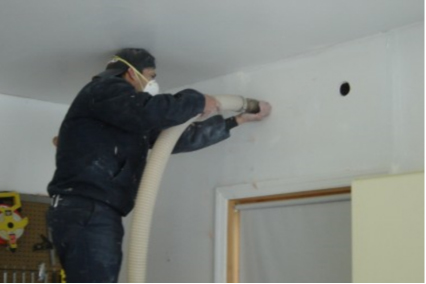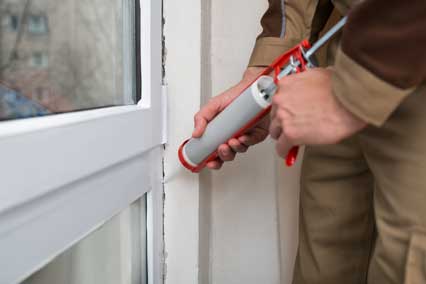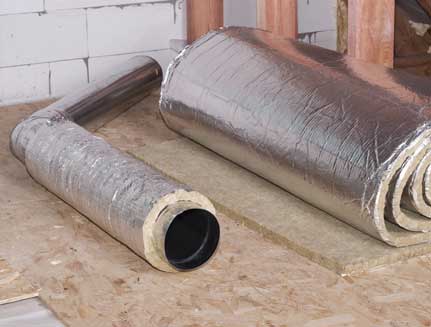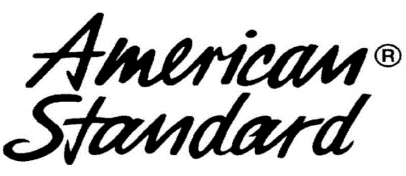OUR EXPERTS SPECIALIZE IN INSULATION AND RADIANT BARRIER
Cool Remodeling Experts specialize in installing a broad range of Insulation and Radiant Barrier Products, that can provide you and your family with the following important benefits:

- Stop wasting your money on constantly increasing utility bills.
- Maximum energy performance efficiency in your home.
- Maximum comfort for you and your family at home.
- Highest level of product quality, efficiency and reliability.
- Well-known brands supported by local product distributors.
- Best product and service warranties supported by manufacturers.
- Low product acquisition and maintenance costs.
- Product rebates and Federal Tax Credits whenever applicable.
- Best product and service value for your money.
- Best return on your long-term investment.
- Peace of mind knowing that you do the right thing.
PRODUCT INTRODUCTION
Energy.gov confirms that Insulation in your home provides resistance to heat flow and lowers your heating and cooling costs. Properly insulating your home not only reduces heating and cooling costs, but also improves comfort.
Replacing or adding more insulation in your home is an important investment to ensure your Home Energy Efficiency.
Before replacing or adding more insulation, be sure to speak with an Energy Efficiency Consultant about the current level of your home energy efficiency.
The energy efficiency consultant will help you to identify all areas of energy inefficiency in your house and potentially save you tens of thousands of dollars in the future.

Cool Remodeling YouTube® Video Library
© 2024 Copyright Owned By The Video Publisher
LOOK FOR ENERGY STAR® COMPLIANT PRODUCTS
Make the switch to ENERGY STAR® high-efficiency products to start saving electricity, water, and gas. This will enable you to substantially reduce your utility bills and, instead, pay-off your new energy-efficient products much faster and save more money in the future.
Visit the Energy Star® to compare the most energy-efficient products for your specific needs.

Depending on the product you choose, you may be eligible to receive a rebate from your local energy provider.
Ask your home Energy Efficiency Consultant and visit Energy Star® Rebate Finder to learn more.
Cool Remodeling YouTube® Video Library
© 2024 Copyright Owned By The Video Publisher
TYPES OF INSULATION MATERIALS
There are many different types of Insulation Materials available to homeowners today.
Insulation is designed to make a home more comfortable to live in, to minimize the energy costs, and to reduce the surrounding noise to ensure an acceptable comfort level. For this reason, the main functions of insulation include protecting home from losing heat in winter and cold in summer, and reducing the noise level, thereby maximizing the comfort level for homeowners.
CELLULOSE

FIBERGLASS

SPRAY

Cool Remodeling YouTube® Video Library
© 2024 Copyright Owned By The Video Publisher
ENERGY LOSS IN THE HOUSE DUE TO POOR INSULATION
Energy is used in a house for various purposes, including Home Heating in winter when it is cold and Home Cooling in summer when it is hot.
Heat Loss happens when heat escapes from inside the house to outside as follows:
- About 25% - 30% through the roof.
- About 20% - 25% through the walls.
- About 20% - 25% through windows and doors.
- About 10% - 15% through the floor.
Knowing the heat loss helps determining the most efficient heating system and ensuring that your property is adequately heated. The less heat loss, the less home heating you will require, which will save energy and money and result in lower heating bills. The same also applies to home cooling in a summer time, when additional cooling may come at substantial air-conditioning costs.

Cool Remodeling YouTube® Video Library
© 2024 Copyright Owned By The Video Publisher
ENERGY LOSS IN THE HOUSE DUE TO AIR LEAKS
Air Leaks represent another serious problem inside a house which causes Energy Loss. For this reason, it is essential to identify all possible leaks and to ensure that these leaks are eliminated or minimized by using various materials including insulation. This will subsequently help homeowners to save a lot of money on electrical bills.
Cool Remodeling YouTube® Video Library
© 2024 Copyright Owned By The Video Publisher
ENERGY-EFFICIENT HOUSE
Insulation plays a paramount role in turning an energy-inefficient house into an Energy-Efficient House.
A home with a high heat loss costs you more money, but the good news is that there are several steps you can take to reduce the energy loss through heat escaping your home.
As a result, you will also reduce your heating bills and substantially increase the comfort level for your family.

Cool Remodeling YouTube® Video Library
© 2024 Copyright Owned By The Video Publisher
STEPS FOR TURNING YOUR HOME
INTO AN ENERGY-EFFICIENT HOUSE
You can Reduce Energy Consumption and Heat or Cold Loss in several ways such as:
- Improving the insulation of the property (reduction of conduction losses).
- Reducing air leakage (reducing convective losses).
- Reducing energy consumption by using efficient heating methods.

Cool Remodeling YouTube® Video Library
© 2024 Copyright Owned By The Video Publisher
WHERE SHOULD YOU INSULATE?
Some of the main House Areas Which Should Be Insulated are illustrated below.
Attic Space
Exterior Walls
Ceilings
Windows And Doors
Floors
You can either install more insulation or ensure that there are no gaps in the existing insulation as adequate insulation keeps heat loss to a minimum.

Cool Remodeling YouTube® Video Library
© 2024 Copyright Owned By The Video Publisher
ATTIC INSULATION
Heat Loss Reduction Through Attic is particularly important, because attic is located under the roof which is constantly exposed to the sun on daily basis. The typical temperatures in the attic may easily reach 150 Degrees F in summer and without proper insulation and ventilation much of this heat will pass through into the house.
There are several types of insulation used in the attic, including batt insulation and foam insulation.
BATT INSULATION

FOAM INSULATION

Cool Remodeling YouTube® Video Library
© 2024 Copyright Owned By The Video Publisher
EXTERIOR WALL INSULATION
Heat Loss Reduction Through Exterior Walls can be accomplished as follows:
- Cavity Wall Insulation for existing walls. This involves drilling three-inch in diameter holes in the walls and blowing insulating material into the gap between the exterior walls and the inside walls. Care should be taken to ensure that no gaps are left in the insulation. The use of cavity wall insulation reduces air circulation and therefore minimizes heat loss through walls. Upon completion, all holes must be closed and patched without leaving any trace of the insulation process.
- Batt Insulation can only be used for insulating exterior walls in new construction or house projects, when the frame of the wall is fully exposed.
CAVITY WALL INSULATION

BATT INSULATION

Cool Remodeling YouTube® Video Library
© 2024 Copyright Owned By The Video Publisher
CEILING INSULATION
Heat Loss Reduction Through Ceilings can be accomplished by applying roll and batt insulation to minimize the loss of heat or cold through ceilings. Upon completion, the ceiling is covered by a drywall and painted. This is particularly important in homes located in climate zones with substantial temperature variations during the day and at night as well as during various time seasons.
ROLL INSULATION

BATT INSULATION

Cool Remodeling YouTube® Video Library
© 2024 Copyright Owned By The Video Publisher
WINDOWS AND DOORS INSULATION
Heat Loss Reduction Through Windows And Doors can be accomplished by installing double-pane windows and doors. Generally, the gaps between the panes of glass are filled with an argon gas or air. Heat or cold loss is reduced as gas or air are poor conductors of heat. The use of caulking materials around window and door frames can also reduce the loss of heat or cold.
DOOR CAULKING

WINDOW CAULKING

Cool Remodeling YouTube® Video Library
© 2024 Copyright Owned By The Video Publisher
FLOOR INSULATION
Heat Loss Reduction Through Floors. It is important to ensure enough insulation between the ground and the floor surface. In new homes, required insulation is installed during the construction and in older homes, insulation layers can be laid on existing floor surfaces.
BOARD INSULATION

BATT INSULATION

Cool Remodeling YouTube® Video Library
© 2024 Copyright Owned By The Video Publisher
WHAT IS R-VALUE?© 2024 U.S. Department of Energy
R-Value is the term used to describe Thermal Resistance, or how effective insulation material is in resisting heat. The higher the R-value, the greater the insulating effectiveness.
The R-value depends on the type of insulation, its thickness, and its density. The R-value of some insulation types also depends on temperature, aging, and moisture accumulation. When calculating the R-value of a multi-layered insulation, add the R-values of the individual layers.
Installing more insulation in your home increases the R-value and the resistance to heat flow.

Cool Remodeling YouTube® Video Library
© 2024 Copyright Owned By The Video Publisher
R-VALUE YOU'LL NEED DEPENDS ON YOUR CLIMATE ZONE© 2024 U.S. Department of Energy
The amount of insulation or R-Value you'll need depends on your climate, type of heating and cooling system, and the part of the house you plan to insulate. To learn more, see our information on adding insulation to an existing house or insulating a new house. Also, remember that air sealing and moisture control are important to home energy efficiency, health, and comfort.

Cool Remodeling YouTube® Video Library
© 2024 Copyright Owned By The Video Publisher
WHAT IS YOUR R-VALUE?© 2024 U.S. Department of Energy
Homeowners in California belong to Climate Zone 3 and all relevant R-Values are presented below.

DIFFERENT TYPES OF INSULATION PRODUCTS
Generally, there are Four Types Of Insulation products as presented below.
FOAM IN PLACE

LOOSE FILL

RIGID FOAM

ROLLS AND BATTS

Cool Remodeling YouTube® Video Library
© 2024 Copyright Owned By The Video Publisher
POPULAR PRODUCT BRANDS
Some of the most popular brands of Insulation Products are presented below in A to Z order.
DUCT INSULATION
Duct Insulation also plays a very important role in maximizing energy savings in your house.


Cool Remodeling YouTube® Video Library
© 2024 Copyright Owned By The Video Publisher
HOT WATER TANK INSULATION
Hot Water Tank Insulation also represents an important element of an overall home insulation project and it will certainly provide additional energy savings to the homeowner.
BEFORE

AFTER

Cool Remodeling YouTube® Video Library
© 2024 Copyright Owned By The Video Publisher
WHAT IS A RADIANT BARRIER?
Radiant Barrier is a reflective insulation system that offers a permanent way to reduce energy costs. Radiant barrier insulation systems reflect Radiant Heat Energy instead of trying to absorb it. A pure aluminumized film radiant barrier reflective insulation is unaffected by humidity and will continue to perform at a consistent level no matter how humid it may be. A radiant barrier insulation system is a layer of metalized film facing an airspace and is installed in the envelope of a building.

Cool Remodeling YouTube® Video Library
© 2024 Copyright Owned By The Video Publisher
BENEFITS OF A RADIANT BARRIER
Unlike traditional insulation materials, Radiant Barriers are highly reflective materials that re-emit radiant heat rather than absorbing it, reducing cooling loads. As such, a radiant barrier has no inherent R-value. The effectiveness of the radiant barrier lies in its ability to reduce heat gain by reflecting heat away from the living space.

© 2024 All4Energy.org
Cool Remodeling YouTube® Video Library
© 2024 Copyright Owned By The Video Publisher
RADIANT BARRIER EXAMPLE
A typical example of a Radiant Barrier Installation is presented below.


Cool Remodeling YouTube® Video Library
© 2024 Copyright Owned By The Video Publisher
FINANCING OPTIONS FOR YOUR HOME ENERGY EFFICIENCY IMPROVEMENT PROJECTS
Once you decide to move forward with any type of a home energy improvement project, we will introduce you to the most suitable Financing Options in accordance with your specific needs. These options may include:
- No interest and no payment financing* for one year.
- Low payment options* with low interest rates.
- Secured* and unsecured financing loans.
* Subject to OAC (on approved credit).
Contact Us Today To Find Out Which Financing Option Will Be The Best One For You.
MEET SOLLY THE SEAL
Just in case you did not meet him yet, we would like to introduce you to Solly The Seal who is a very important member of the Cool Remodeling TM management team.
Solly’s main job is to approve all home energy efficiency products and provide his Seal of Approval.


WE ONLY WORK WITH ORGANIZATIONS AND BRANDS APPROVED BY SOLLY THE SEAL





































































































